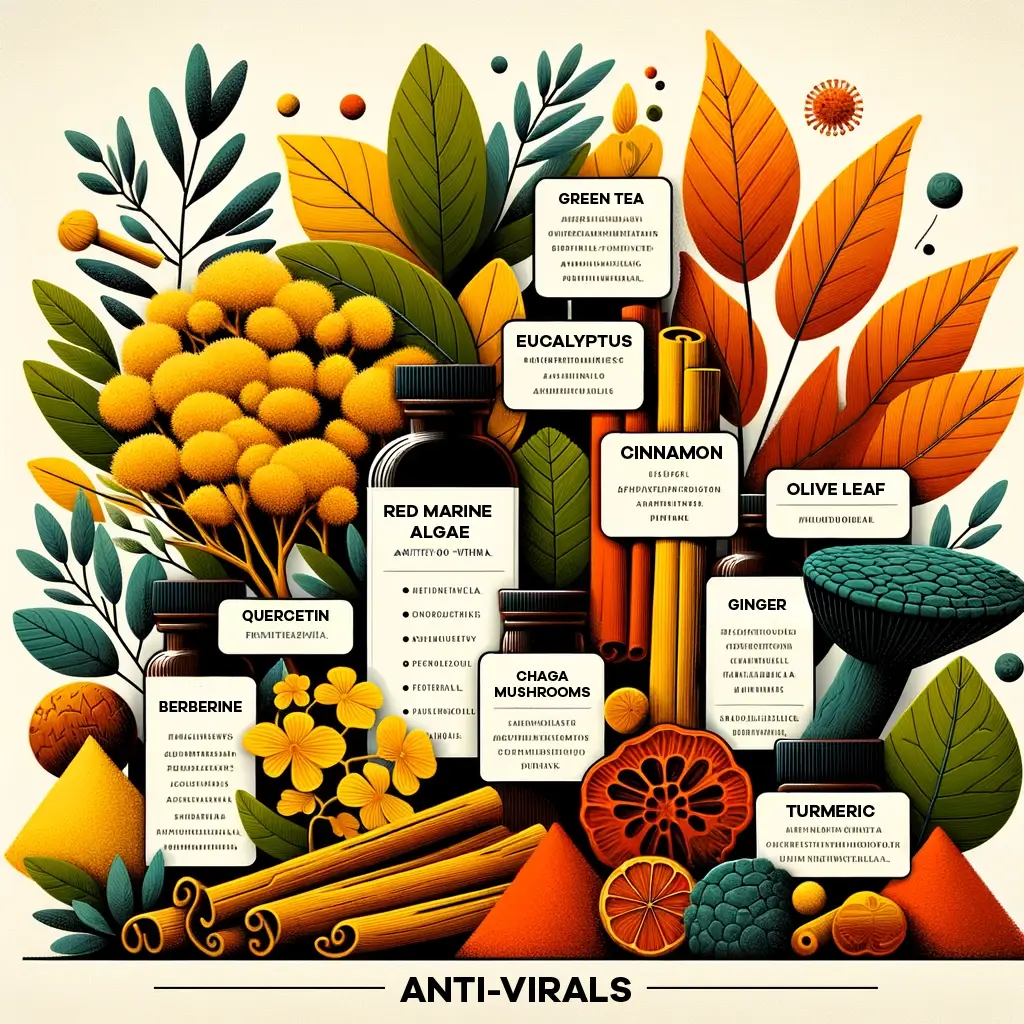Cold and flu season is almost upon us as, winter’s chilly temperatures and drier air cause more of us to fall ill from viruses like the flu, colds, respiratory syncytial virus, and Covid. We all know the miserable symptoms – coughs, congestion, fever, body aches. But did you know that natural compounds found in foods and herbs can actually help stop these viruses in their tracks? To help your body fend off infection this winter, it pays to understand how viruses infect healthy cells so you can choose the right supplements and diet to slow them down.
Let me walk you through the viral life cycle step-by-step and show you which plant-based compounds can intervene along the way. Arm yourself with knowledge and a natural antiviral plan so you can stay healthy even when viruses are spreading like wildfire.
Outsmarting viruses: the 6 stages of viral infection and how to block them
The virus is the enemy trying to sneak in, take over, and multiply within your cells. To do this, it has to progress through several stages of attack.
Understanding this sequence of events allows us to identify where we can set up “roadblocks” using natural compounds to derail the viral mission. Let’s walk through each stage and see how plants are our allies.

- Attachment and Fusion
This is the first stage where the virus binds to receptors on the cell surface and fuses its envelope with the cell membrane to enter the cell. Compounds in various plants can bind to viruses or cell receptors to block attachment and fusion, including:- Eucalyptus, geranium and essential oils
- Red marine algae (also helpful agains the herpes virus)
- Elderberry
- Cinnamon
- Olive leaf
- Oregano oil
- Additionally glycine, an amino acid (a protein) helps to strengthen the barriers inside the nose and mouth to prevent viral entry, and reduce virally induced inflammation. It is thought to mediate the mechanism by which Ivermectin is thought to help in recovery from Covid.
- Uncoating
Once inside the cell, the viral envelope is removed in a process called uncoating, releasing the viral genome. Compounds like those in tea tree oil and melia trees inhibit uncoating by preventing the pH changes or enzymatic reactions required for this stage. - RNA Replication
The viral genome is replicated by viral proteins like RNA polymerase to produce more copies. These compounds help to inhibit the viral replication enzymes:- Turmeric
- Chamomile
- Citrus fruits
- Green tea
- Ginger
- Garlic
- Quercetin – widely found in fruits and vegetables – is a strong anti-viral, anti-histamine and mast cell stabiliser. Be careful though as it can decrease oestrogen levels, which can be good for oestrogen dominant conditions (e.g. fibroids, endometriosis, adenomyosis and heavy periods).
- Protein Synthesis
Viral proteins are synthesised using the our cell’s machinery. Honeysuckle compounds and turmeric can inhibit viral proteases and glycosylation enzymes needed for synthesising viral proteins. - Assembly
Newly made viral components are assembled into virions. Plant alkaloids from berberine containing plants such as Astragalus can inhibit assembly by blocking interactions between viral components. - Release and Maturation
Assembled virions are released from the cell, often after maturation involving final processing of proteins. Chaga mushrooms and white birch can inhibit these processes.


























